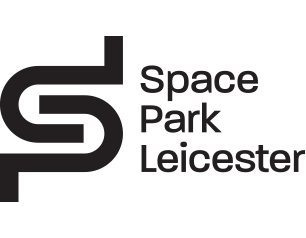University of Leicester experts to present pioneering space research at the 75th International Astronautical Congress

Leading experts from the University of Leicester will present groundbreaking advancements in space technology and exploration at the International Astronautical Congress (IAC), taking place in Milan this week.
Three key members of the University’s Space Park Leicester team—Alessandra Barco, Hannah Sargeant, and Tanya Vladimirova—will deliver presentations at this prestigious global forum taking place at the MICO Convention Centre (14 -18 October).
Alessandra Barco, an Aerospace Engineer at Space Park Leicester, will present a paper titled “Impact Modelling for the ESA Radioisotope Power Systems” on Friday, 18 October at 15:55 in Blue Hall 1.
Her work will focus on the impact modelling performed to start the qualification of the Americium-based Radioisotope Heater Units (RHUs), developed by the University of Leicester. The RHU is an essential component in future deep space missions, including the ExoMars mission.
The RHU is currently baselined for the Exomars lander, and extensive testing and modelling will be required to build its safety case.
Alessandra said: “This is a crucial step in building the safety case for RHUs, which will be a key power source for space exploration.”
Alessandra will also spearhead a special session on Thursday, 17 October from 11:35 to 12:45 in Red Hall 2. The session, titled “Empowering Tomorrow’s Space Visionaries: Exploring Multidisciplinary Pathways to Space Exploration”, will revolve around the projects of the SEEDS (Space Exploration Development Systems) programme.
This innovative international placement programme, run in collaboration with Politecnico di Torino and Institut Supérieur de l’Aéronautique et de l’Espace, offers students the opportunity to work on space exploration research projects across three countries.
Alessandra explained: “SEEDS offers a unique opportunity to work with leading space industry partners and develop multidisciplinary solutions to future space exploration challenges.”
Hannah Sargeant, a Research Fellow, will present updates on a recent mission study that utilises the power systems built at the University of Leicester during a session on Thursday, 17 October at 16:42. Her paper, titled “An Interplanetary Communications Relay Powered by Americium-241 Fuelled Radioisotope Power Systems”, presents a communications relay concept that will support long-term interplanetary communication using radioisotope power systems. The study was conducted in partnership between the University of Leicester and the Johns Hopkins University Applied Physics Lab.
On Thursday, 17 October at 14:20, Professor Tanya Vladimirova, a researcher from the School of Computing and Mathematical Sciences, will present her team’s pioneering work at the 31st Symposium on Small Satellites. Her paper, “Artificial Intelligence Enabled Multipurpose High-Performance Computing System for Small Spacecraft”, introduces a highly novel computing system that utilises the Sparse-Split-Parallelism (SSP) design framework to optimise deep learning algorithms for space operations.
This system, validated through drone flight tests, has the potential to revolutionise small satellite missions and a wide range of Earth observation applications, from disaster monitoring to spacecraft anomaly detection.
Tanya explained: “This work is the result of outstanding efforts by a multidisciplinary team from the University of Leicester’s School of Computing and Mathematical Sciences, Space Park Leicester, and the University’s School of Physics and Astronomy.
“Funding from the UK Science and Technology Facilities Council (STFC) and Space Park Leicester is gratefully acknowledged. The work made use of the University of Leicester High-Performance facility ALICE.
“We’re excited to present our findings at IAC-24 and look forward to engaging with the international space community.”
Piyal Samara-Ratna, Principal Engineer for the Manufacturing, Engineering, Technology and Earth Observation Research (METEOR) centre at Space Park Leicester, added: “This project is an outstanding example of engineering, computing technology and Earth observation science working together to tackle barriers limiting the adoption of machine learning in space.”
Space Park Leicester will also be showcasing its innovative BepiColombo Mercury Imaging X-ray Spectrometer (MIXS) model at its stand throughout the week. Developed in Leicester, MIXS is the first imaging X-ray instrument to fly to another planetary body and is designed to analyse the surface of Mercury. It represents a major leap in planetary science, and attendees are invited to learn more about this groundbreaking instrument.
Professor Richard Ambrosi, Executive Director of Space Park Leicester, highlighted the significance of the University’s contributions.
He said: “In the year since we last attended the IAC, we have made significant strides in space nuclear technology and planetary science. From nuclear power systems to artificial intelligence, we’re at the forefront of innovation and are eager to share our progress with the global space community.”
- Find out more about the University of Leicester
Main image: The space nuclear power programme team at Space Park Leicester


